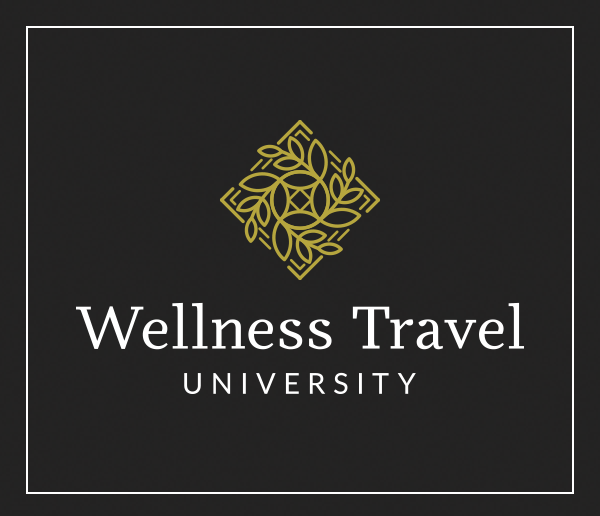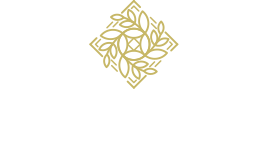Wellness Travel Glossary
A practice of applying compression on the body’s pressure points to stimulate energy flow in the body, release muscle tension, relieve pain, and promote relaxation. Often referred to as “acupuncture without needles.”
A Chinese method of medicine involving inserting needles into the body to increase energy flow and alleviate pain.
The use of aromatic plant extracts and essential oils in massage or baths to promote wellbeing.
From the Japanese words “ashi,” meaning foot, and “atsu,” meaning pressure, a therapist suspends from overhead bars while using foot pressure.
An Indian system of medicine based on the belief that health and wellness depend on a delicate balance between the mind, body, and spirit.
Therapeutic massage using massage oils to release toxins, invigorate, and relax.
Refers to the use of thermal water and waters with minerals, salts, sulfur, and other organic elements as an approach for treating conditions ranging from pain to poor circulation.
Treatment in which strips of cloth soaked in anything from herbal teas to oils to mud are wrappy around the body.
A circulation-stimulating pool of frigid water designed to be used in conjunction with sauna or steam room sessions.
Based on the concept that color has vibrational energy that can help correct imbalances in the body, color therapy is employed to treat mental and spiritual health.
Treatment said to improve the function of the central nervous system by balancing the fluid surrounding the brain and spinal cord. Performed through gentle massage on the neck and base of the skull.
Silicone cups are placed strategically to achieve detoxification, a greater range of motion, and increased lymph and blood flow.
Massage method focusing on aligning the deep layers of muscles and connective tissue (called fascia) through kneading and applying slow, intense pressure.
Establishments that focus on lifestyle improvement, health enhancement, and self-renewal.
Rhythms and sounds used to promote emotional and spiritual release.
Spas set in natural or protected areas that encourage interaction with the natural environment. Some use indigenous healing rituals and ingredients.
Aromatic and therapeutic essences extracted from flowers, fruits or trees.
Procedure to slough dead skin cells off the face or body with abrasives like grape seed, sugar, clay and salt.
Generic term for treatment of skin in the face that usually includes massaging, cleansing, toning, steaming, exfoliating and moisturizing.
A practice that originated in Japan. Not just a walk in the woods, it is a contemplative experience in a forest, using all of one’s senses.
Salt-based treatments broken down into dry and wet procedures. The dry method is typically conducted in a salt room completely free of humidity, where one inhales dry micro-particles of salt created by a halogenerator. Wet methods include bathing in mineral salt water, ingesting salt water, and salt water flotation tanks. Halotherapy is said to be good for skin conditions like acne and psoriasis and for chronic respiratory conditions like asthma and allergies.
Traditional Middle Eastern bath house. Modern versions involve bathing rituals including vigorous scrubs, alternating hot and cold water treatments, and time in a relaxation area.
Treatment using strips of cloth soaked in a heated herbal solution to wrap around the body. It is used for relaxation and to eliminate impurities and detoxify.
System of healthcare that takes into account physical, nutritional, environmental, emotional, social, spiritual and lifestyle values, and uses all modes of diagnosis and treatment.
Treatment in which smooth heated stones are placed on or used to stroke areas of the body, such as the back, palms, and between the toes.
General term for therapeutic procedures that use water for a variety of purposes, from relaxation to disease treatment. Methods can include Kneipping, underwater jet massage, specialized showers, mineral baths, thalassotherapy and more.
Saunas that use infrared panels instead of conventional heat. Infrared saunas operate at lower temperatures than traditional ones, but the heat penetrates the skin more quickly.
Steam vapor treatments that are deemed helpful for those suffering from impaired respiratory function. Vapor is often mixed with herbal elements such as eucalyptus and chamomile.
Hot, bubbling bath used for relaxation and usually enjoyed in the nude at a Japanese sento (public bath) or onsen (hot spring).
A large gender-segregated public bathhouse in South Korea, furnished with hot tubs, showers, Korean traditional kiln saunas and massage tables.
A form of hydrotherapy originated in the mid-1800s. The modern version involves immersions in both warm and cold water, movement therapies and herbal treatments.
German for “cure.” A planned course of treatments, taking the kur is a process that can last from one to three weeks.
Following a man-made, spiral pattern path to meditate and to focus and calm the mind.
Hawaiian massage technique involving gentle, continuously flowing and rocking motions. May include gentle stretches and joint rotation.
Exfoliation with a sponge made of the fibers of a loofah, a vegetable from the gourd family. Loofah is effective in removing dry skin and stimulating circulation.
Therapeutic massage technique that increases circulation and drains toxins from the body through the lymphatic system using wavelike movements. Used to reduce swelling, detoxify and relieve pain and stress.
Massage is a manual manipulation of tissues to improve health and well-being by relaxing muscles, relieving tension, increasing range of motion and improving circulation. There are many types of massage therapy. Definitions are interspersed throughout this glossary.
Destination or day spa that offers traditional and complementary medical services supervised or administered by medical professionals. A spa may specialize in diagnostic testing, preventive care, cosmetic procedures, or a combination.
Practice of traveling to a medical facility outside one”s home country to seek quality health-care services, often at lower prices than in the home country.
Concentrating the mind for a period of time, in silence or with the aid of chanting, for the purposes of relaxation. Often accompanied with focused exercises.
A source of thermal water containing naturally occurring elements from surrounding rocks, sand, and soil, that is used in hydrotherapy treatments.
Facial exfoliation procedure in which the top layer of skin is scrubbed away with abrasive ingredients. Microdermabrasion improves and smoothes the skin’s surface and can minimize blemishes, fine lines, and signs of sun damage.
Spa offering an on-site source of mineral-rich thermal or seawater that is used in hydrotherapy or thalassotherapy.
Uses mud rich in proteins, organic matter, vitamins, and minerals. It is used as a body or facial treatment to hydrate and exfoliate the skin and in a bath to ease aches and pains.
Holistic medical system based on the healing power of nature and the ability of the body to heal itself. Naturopathy includes the use of natural foods, vitamins and supplements, herbal medicine, homeopathy, hydrotherapy, and mind-body therapies.
Natural chemical compounds added to foods to prevent or treat disease and improve health. Also known as functional foods or phytochemicals.
Onsen is the Japanese term for hot spring or a resort developed around mineral waters.
Treatment that involves oxygen and other nutrients being applied to the face. Said to reduce the signs of aging.
Heated paraffin wax brushed over the body to soothe muscles.
A system of exercises using special apparatus, designed to improve physical strength, flexibility and posture, along with enhancing mental awareness.
Therapeutic, relaxing treatment involving hands placed along the energy meridians, stretching, and light rocking to bring the body”s own energy into balance.
From qi (energy) and gong (the achievement that comes from practice), a group of Chinese self-healing exercises combining simple movements, breathing and mental imagery to relax and strengthen the body and the mind.
Pressure-point massage, usually on the feet, to restore the flow of energy throughout the body. Practitioners believe that areas on feet correspond to other areas throughout the body.
Japanese healing technique in which practitioners lay hands on areas of the body to channel energy and promote deep relaxation, stress reduction, and well-being.
Spa facility offering treatments and services at a vacation destination that also offers activities, such as golf, tennis, horseback riding, skiing and water sports.
An enclosed, heated room designed to promote sweating and boost circulation, relax muscles and release toxins.
Body treatment using concentrated seawater and seaweed that contains minerals, vitamins and proteins. Said to detoxify and increase circulation.
Japanese for finger pressure, a massage technique in which the therapist applies pressure to specific points to stimulate and unblock energy.
Ayurvedic treatment during which a stream of oil is poured on the forehead (the “third eye”) in order to help concentration and relaxation.
Sound waves or vibrations from the “playing” of metal bowls reduce stress and induce calm.
Treatments and programming specifically designed to address the body”s sleeping processes and improve the quantity and quality of sleeping hours, as well as remedy conditions like sleep apnea and insomnia.
A seamless treatment experience that might include a consultation and several spa services in one session.
Room where temperatures are kept between 110 and 130 Fahrenheit. The heat and humidity softens skin, opens pores and relieves tension.
Gentle massage technique manipulating muscles with long strokes and kneading.
Chinese martial art in which practitioners move slowly through a series of postures coordinated with the breath. Used to reduce stress and improve flexibility, strength, energy, and overall well-being. Often described as “meditation in motion.”
Traditional steam bath used by indigenous Mexican and Central Americans consisting of a dome-like structure built around a pit where water is poured over hot rocks. Induces sweating, relaxation and detoxification.
Treatment involving stretching and pressure-point massage to release blocked energy, relieve tension, align the skeletal structure, and increase flexibility. Traditionally done on the floor with client wearing loose clothing.
Umbrella term describing treatments using natural elements from the ocean for therapeutic benefits. Treatments include showers, mineral and mud baths, and seaweed or algae wraps.
An ancient system of medicine based on the concept of balanced qi (pronounced “chee”), or vital energy that is believed to flow throughout the body. Practitioners use various approaches, including acupuncture, tai chi and herbal remedies, to address health issues.
A shower treatment in which multiple water jets spray water on the back of a client lying prone on a cushioned table. It is meant to reduce stress, hydrate and improve circulation.
Skin treatments using antioxidant-rich grape skins, seeds and extracts in scrubs, baths, and masks.
Combining the words water and shiatsu, this massage treatment is done in a warm pool in which a therapist supports the client and administers rhythmic movements, pressure-point massage and stretches. Watsu relieves stress and pain, and can promote deep relaxation.
Ancient art and philosophy that involves both mind and body and is aimed at self-development and self-realization. The physical practice of yoga involves performing postures (asanas) and using controlled breathing and meditation to stretch and tone.
Trips taken specifically to support or increase the traveler’s sense of physical and/or mental wellbeing.
A guided multi-day program that may include educational workshops, fitness activities like yoga and nature hikes, and options for holistic treatments.
© 2025 Wellness Travel University, LLC. All Rights Reserved.




